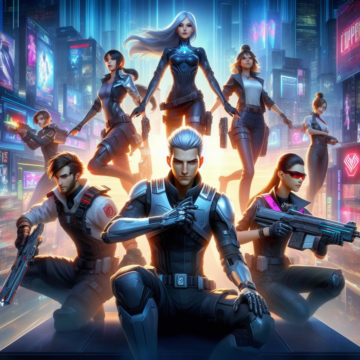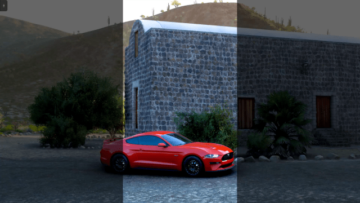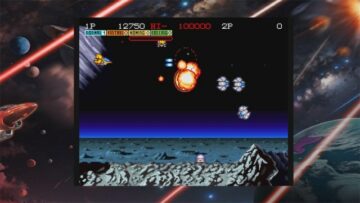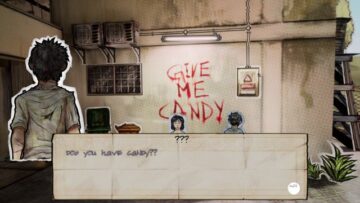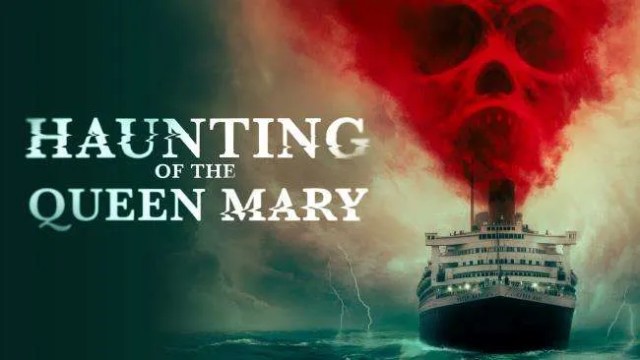

I don’t think I’ve been so interested in how a film’s been financed before. Haunting of the Queen Mary takes place almost entirely on board the Queen Mary, a retired transatlantic ocean liner and tourist attraction currently docked in Long Beach, California. You can go and visit the ship yourself: once owned by Disney, it’s been thoroughly refurbished and opened for public viewing this year. What fascinates us is that The Queen Mary has never really been known for its ghosts. Yet, here we are, with a movie focusing on exactly that, coinciding with the reopening of the ferry alongside its ghost tours. It can’t be coincidental, right?
Business proposition aside, the Queen Mary makes for a fantastic backdrop for a horror movie. From Deep Rising to Triangle, ocean liners have proven to be huge, isolated settings for horror movies, while the internal furnishings of the Queen Mary look like they’ve been ripped right out of The Shining’s Outlook Hotel. Scary and kitsch? The Queen Mary has got it nailed.
We’re not the only ones to think the ship is made for cinema. The main characters of Haunting of the Queen Mary, Anne Calder (Alice Eve – Star Trek Into Darkness, Men in Black 3) and Patrick Calder (Joel Fry – Plebs, Cruella) believe so too, as they have a pitch to make to the captain of the ship. They believe that the Queen Mary is perfect for some kind of augmented reality experience, with tourists seeing the ship as it once was. They bring their son, Lucas Calder (Lenny Rush, refreshingly an actor with dwarfism in a role that doesn’t even reference it) along for the tour.
That tour doesn’t go well. Young Lucas gets waylaid by ghosts who entice him into the bowels of the ship and a swimming pool that has long been boarded off. He gets whisked away to the spirit realm and a replacement Lucas goes home with the Calder parents. Et voilà: you have but one of the many strands to Haunting of the Queen Mary’s narrative.
Haunting of the Queen Mary, you see, is a lattice of timelines and subplots, some of which intersect. Two of those timelines move in a roughly chronological pattern: there’s the modern day one that we’ve just mentioned, which comes back onto the ferry as the Calder parents try to work out what happened to Lucas; and there’s a 1938 plot, where we follow a transatlantic voyage of the Queen Mary. The focus shifts between these two as they progress, but they’re interspersed with flashes of a grisly series of murders. They’re the final, deathly moments of that 1938 voyage, and Haunting of the Queen Mark dips into them, every now and then, for a bit of claret.
There’s a reason for the jumping about, as time gets smudged and tinkered with. Ghosts from the 1938 crossing appear and reappear in the modern day, and events echo across time too. The film has a lot of fun with mirrors, as themes repeat across the decades. Even the credit sequence is mirrored.
It’s a bold structure for what is a reasonably low-budget horror movie, and – in all honesty – it works and fails in about equal measure. We found that important plot points were bypassed entirely, chucking clarity out of the portholes. It took us too long to realise that Anne and Patrick knew about the Queen Mary’s history because Fake Lucas literally told them about it. They waltz in with a grand plan to root out Queen Mary’s evil, yet there’s no clue how they’re so prepared. There’s more of these jumps in logic than we care to mention.
But it can create a dreamlike experience where characters weave in and out of the timelines almost seamlessly. The Queen Mary becomes the constant as we move from 1938 to ghosts to modern day, and the characters themselves question which layer of reality they are currently experiencing. Some even move between them. When it works, it’s pretty darn clever.
That thin thread of understanding is put under pressure by the sheer number of subplots. Haunting of the Queen Mary could have done with shedding a few. The Queen Mary’s original captain is given too much screen time and eventually doesn’t end up anywhere at all. The modern day captain is played with grim panache by Alan Booty, but the question over how much he knows, and whether he’s implicated isn’t all that interesting. Finally, a dance number with a real-world celebrity is initially dazzling but runs for too long. The end result is a runtime that feels bloated.
There’s also a mismatch of quality in terms of the two main timelines. The 1938 stuff is atmospheric and authentic. There’s echoes of Bioshock in the way that the guests are dolled up in Halloween masks and circus outfits. The sense that everything is building up to death, and a whole lot of it, is palpable.
But the modern day sequences just can’t find a similar level of threat and emotional investment. It does happen to have some of the movie’s best set pieces – an arm pushing through a smartphone is a particular highlight – but it’s overall a tad wishy-washy, made worse by the miscast Alice Eve and Joel Fry. Joel Fry, best known for his comedic roles, is clearly trying to push out of the envelope he’s found himself in, but is mostly just sulky as Patrick Calder. Alice Eve has more of a punt at bringing some hard-nosed determination to Anne Calder, but still doesn’t convince. There is no chemistry between them at all, the script doesn’t help matters by making what they’re doing clear, and mostly they’re expected to uncover exposition. We kept wanting to move the time-slider back to 1938.
There’s no doubting that Haunting of the Queen Mary is ambitious, trying with all its might to include multiple timelines, subplots and realities in a single indie horror movie. While it’s often effective, in the 1938 sequences in particular, it’s just as likely to be confused and baggy. Your interest will peak and trough with the waves, and you might wish that someone steadied the ship and chucked out a lot of the narrative’s dead weight.
- SEO Powered Content & PR Distribution. Get Amplified Today.
- PlatoData.Network Vertical Generative Ai. Empower Yourself. Access Here.
- PlatoAiStream. Web3 Intelligence. Knowledge Amplified. Access Here.
- PlatoESG. Carbon, CleanTech, Energy, Environment, Solar, Waste Management. Access Here.
- PlatoHealth. Biotech and Clinical Trials Intelligence. Access Here.
- Source: https://www.thexboxhub.com/haunting-of-the-queen-mary-film-review/
- 1
- a
- About
- across
- AI
- Alan
- alice
- All
- almost
- along
- alongside
- also
- ambitious
- an
- and
- anywhere
- ARE
- ARM
- as
- aside
- At
- attraction
- augmented
- Augmented Reality
- Authentic
- away
- back
- backdrop
- BE
- Beach
- because
- becomes
- been
- before
- believe
- BEST
- between
- Bit
- Black
- board
- bold
- bring
- bringing
- Building
- but
- by
- california
- CAN
- care
- Celebrity
- characters
- chemistry
- cinema
- clarity
- clear
- clearly
- comes
- constant
- content
- could
- create
- credit
- crossing
- currently
- dance
- day
- dead
- death
- decades
- deep
- Disney
- does
- doing
- done
- echo
- echoes
- Effective
- Emotional
- end
- entirely
- equal
- et
- even
- events
- eventually
- Every
- everything
- exactly
- expected
- experience
- experiencing
- fails
- fake
- few
- Film
- Final
- Finally
- financed
- find
- Focus
- focusing
- follow
- For
- found
- from
- fun
- Ghost
- given
- go
- goes
- got
- grand
- halloween
- happen
- happened
- has
- haunting
- Have
- he
- help
- here
- High
- Highlight
- him
- his
- history
- Home
- Horror
- hotel
- How
- HTTPS
- huge
- important
- in
- include
- Indie
- initially
- interest
- interested
- interesting
- internal
- into
- investment
- Is
- isolated
- IT
- ITS
- just
- kept
- kind
- known
- knows
- layer
- Level
- like
- likely
- logic
- Long
- Long Beach
- Look
- lot
- made
- main
- make
- MAKES
- Making
- many
- mark
- Masks
- Matters
- measure
- Men
- might
- mirrors
- Modern
- moments
- more
- mostly
- move
- movie
- Movies
- much
- multiple
- narrative
- never
- no
- not
- now
- number
- ocean
- of
- off
- often
- on
- once
- One
- ones
- only
- onto
- opened
- original
- out
- Outlook
- over
- overall
- owned
- palpable
- parents
- particular
- patrick
- Pattern
- peak
- perfect
- pieces
- pitch
- place
- plan
- plato
- plato data intelligence
- platodata
- platogaming
- played
- Points
- pool
- prepared
- pressure
- pretty
- Progress
- proven
- public
- push
- pushing
- put
- quality
- question
- real world
- realities
- Reality
- really
- realm
- reason
- reference
- reopening
- Repeat
- replacement
- result
- review
- right
- ripped
- rising
- role
- roles
- roughly
- runs
- rush
- Screen
- script
- seamlessly
- see
- seeing
- sense
- Series
- set
- settings
- Shifts
- similar
- single
- smartphone
- So
- some
- someone
- son
- spirit
- Star
- Star Trek
- still
- structure
- swimming
- takes
- terms
- than
- that
- The
- their
- Them
- themes
- themselves
- then
- there
- These
- they
- think
- this
- those
- threat
- Through
- time
- timelines
- to
- told
- too
- took
- tour
- tourists
- tours
- try
- trying
- two
- uncover
- under
- understanding
- up
- us
- viewing
- Visit
- Voyage
- wanting
- was
- waves
- way
- we
- Weave
- well
- were
- What
- What is
- when
- where
- whether
- while
- WHO
- whole
- will
- with
- Work
- work out
- works
- worse
- year
- yet
- you
- young
- your
- yourself
- zephyrnet



